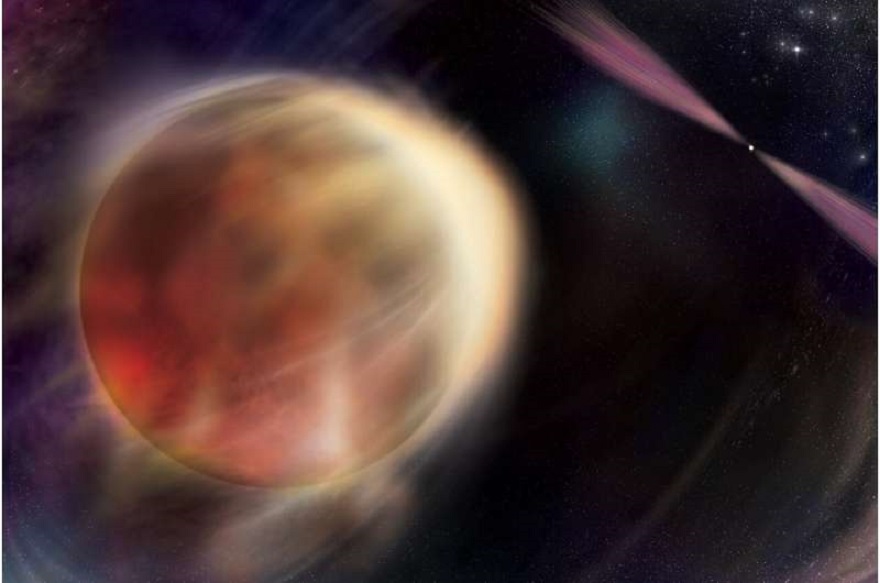Scientists first saw a gamma-ray eclipse in systems of so-called “spider” pulsars. They consist of a neutron star and an ordinary luminary, from which matter flows to a more massive object.

First recorded gamma-ray eclipses
For more than 10 years, an international team of scientists has been exploring the Universe using the Fermi gamma-ray telescope created by NASA. They were interested in the so-called “spider” pulsars, binary systems consisting of neutrons and ordinary stars.
Neutron stars are massive remnants of supernovae that emit a wide range of electromagnetic waves, the shortest of which are gamma rays. At the same time, the second component of the system practically never emits most of these waves. But it can block them from the observer when it passes between it and the pulsar.
However, gamma rays are so high-energy that it is extremely difficult to arrange the eclipse in this range. And now researchers have reported that they have registered a decrease in the number of gamma photons for seven similar objects.
What are “spider” pulsars?
Spider pulsars got their name due to the similarity of customs with some species of spiders. They are formed from binary star systems in which one of the components is much more massive than the other. It evolves much faster, explodes like a supernova and turns into a neutron star.
And it is this super-dense object that begins to pull a matter from the companion that resembles the habits of spiders of the genus Latrodectus, in which the female eats the male after mating. Two varieties of binary systems containing pulsars were named after these arthropods.
Binary pulsar systems, in which the mass of a companion star is less than 5 percent of the solar one, have been named “black widows” in honor of a spider living in North America. In the case when the mass of the second component is from 10 to 50 percent of the solar, they are called Redback in honor of the Latrodectus representative living in Australia.
How much does a neutron star weigh?
Spider pulsars got their name due to the similarity of customs with some species of spiders. They are formed from binary star systems in which one of the components is much more massive than the other. It evolves much faster, explodes like a supernova and turns into a neutron star.
And it is this super-dense object that begins to pull a matter from the companion that resembles the habits of spiders of the genus Latrodectus, in which the female eats the male after mating. Two varieties of binary systems containing pulsars were named after these arthropods.
Binary pulsar systems, in which the mass of a companion star is less than 5 percent of the solar one, have been named “black widows” in honor of a spider living in North America. In the case when the mass of the second component is from 10 to 50 percent of the solar, they are called Redback in honor of the Latrodectus representative living in Australia.
How much does a neutron star weigh?
One of the most important questions that scientists want to answer is the mass of components. It strongly depends on the tracking conditions. Until now, researchers have been studying “spider” pulsars in visible light. This mainly made it possible to understand the direction of movement of the companion, but not the angle of its inclination.
Therefore, the exact mass of the neutron star remained unknown. And this is a really important question, because they are the densest objects on which the physics familiar to us still operates and we do not know the upper limit of the mass beyond which the singularity occurs.
The discovery of gamma-ray eclipses made it possible to determine the angle of inclination of the orbit of the companion star extremely accurately. Among the systems for which this was done was PSR B1957+20, the first black widow known to scientists.
Previously, it was believed that the mass of this pulsar was 2.4 times the mass of the Sun, which made it the heaviest known neutron star. But new research has shown that its mass is only 1.8 times that of the sun. Therefore, the question of where the boundary between black holes and neutron stars lies becomes even more complicated.
According to phys.org
Follow us on Twitter to get the most interesting space news in time
https://twitter.com/ust_magazine
